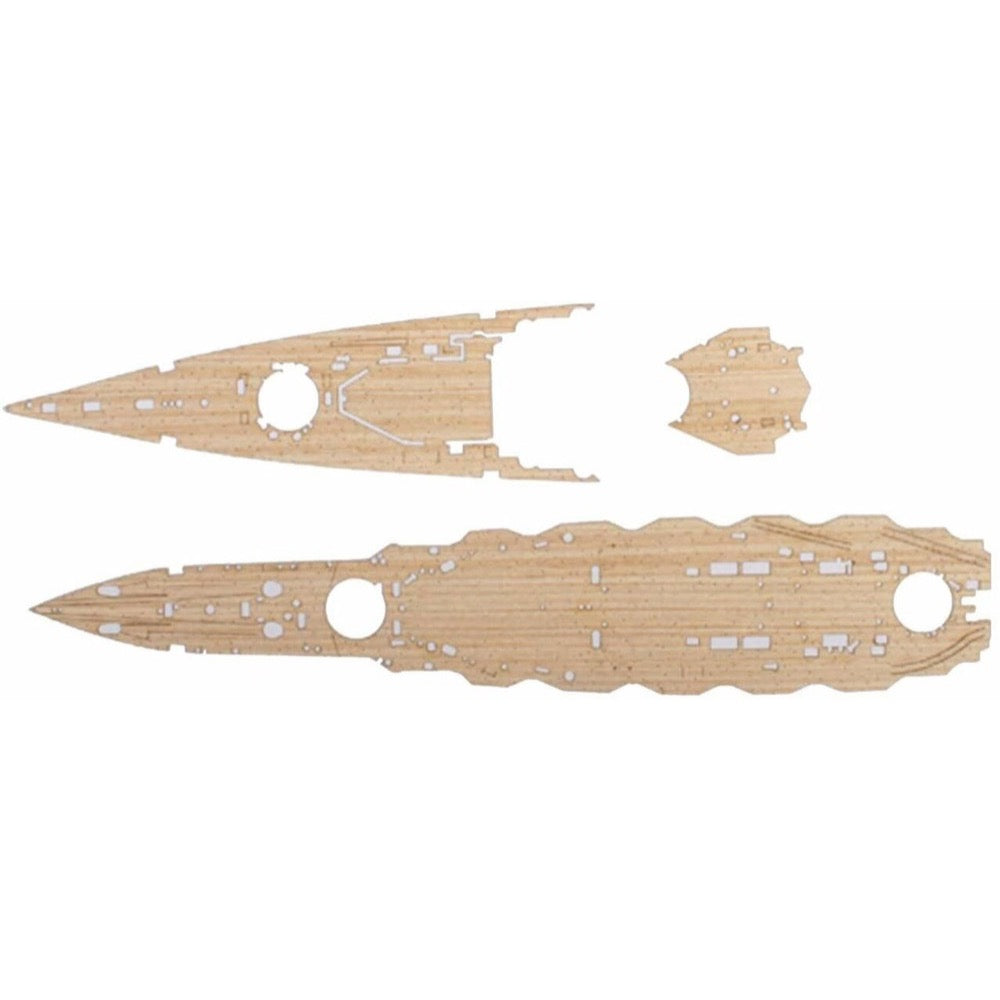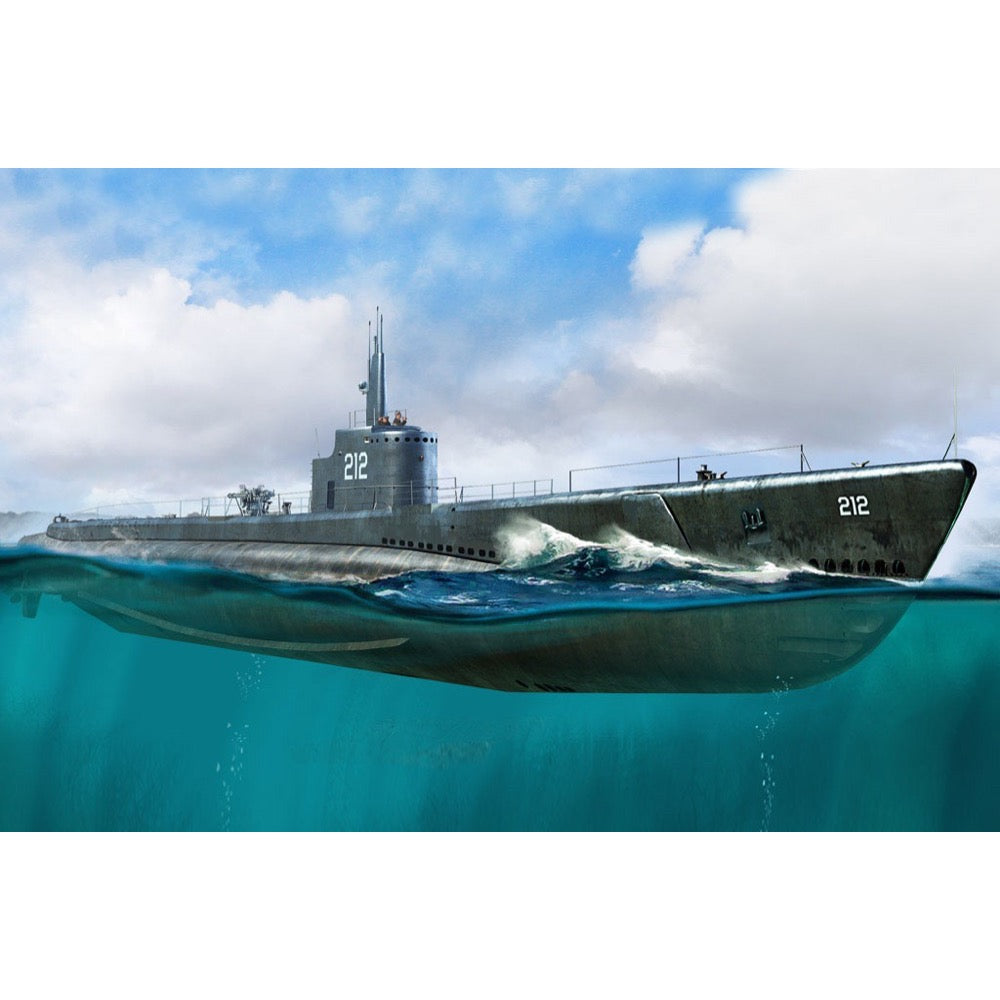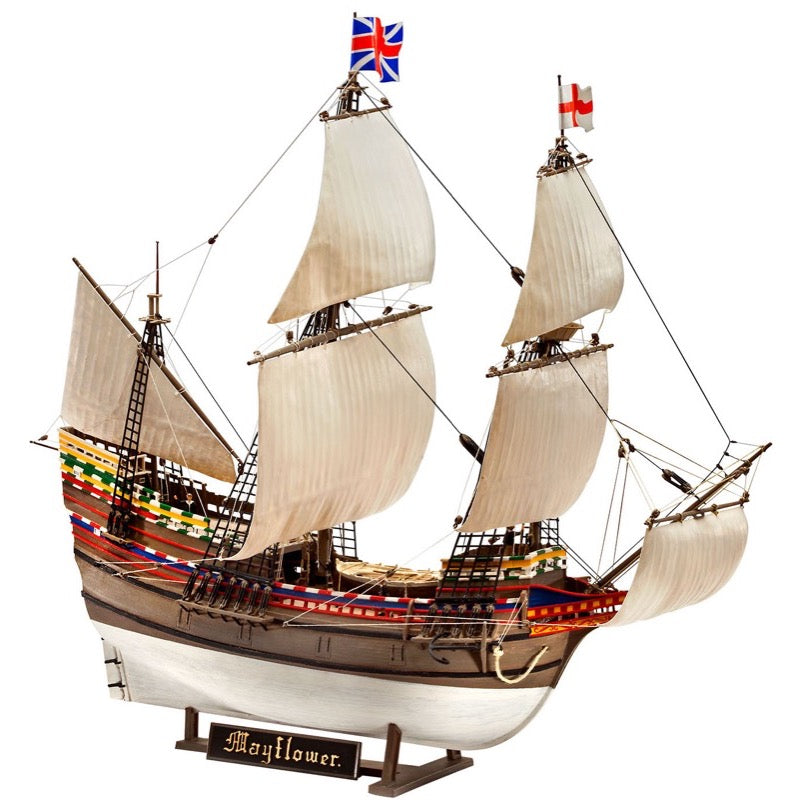
Revell 05684 1/83 Gift Set Mayflower 400th Anniversary
33.00
$
<p>Model kit of a typical 17th century merchant ship that made history 400 years ago. In 1620, 102 people landed on the New World coast with the Mayflower to begin a new life there in freedom - an event commonly considered the settlement of the later United States of America.</p>
<h3>Features</h3>
<ul>
<li>Hull with a wooden structure</li>
<li>Detailed deck</li>
<li>Prefabricated shrouds</li>
<li>Occupation figures</li>
<li>Contained yarn for standing and running goods</li>
<li>Flag board</li>
<li>Stand with name tag</li>
</ul>
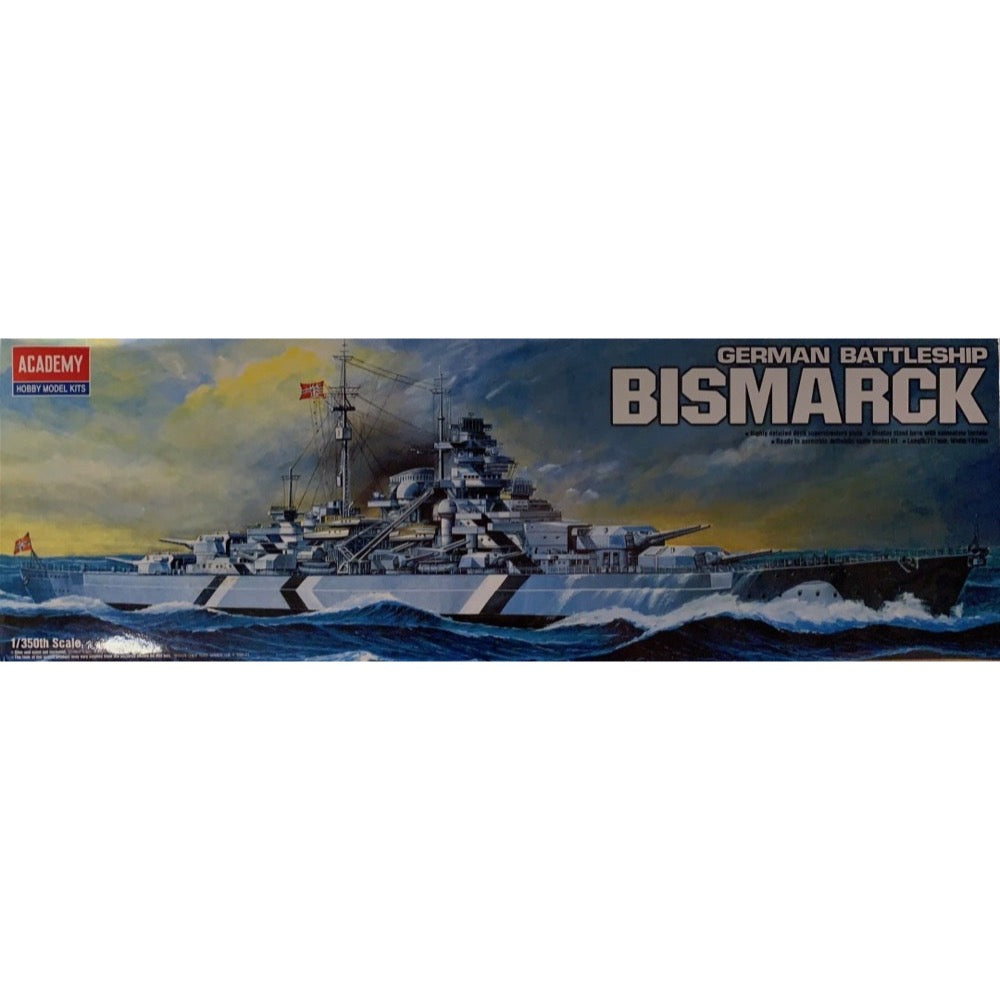
Academy 14109 1/350 German Battleship Bismark
42.00
$
<p>Bismarck was a German battleship, the keel of which was laid in 1936 and launched in February 1939. The battleship entered the rope service in the German Navy (German Kriegsmarine) in August 1940. The ship was 251 meters long, 36 meters wide, and had a full displacement of 53,000 tons. Bismarck's top speed was around 29-30 knots. The main armament was 8 380 mm guns in four twin turrets, and the secondary armament included: 12 150 mm guns or 16 105 mm guns.</p>
<p>The Bismarck was the first ship of the type with the same name - the Bismarck. It was ordered to replace in line the old battleship Hannover, completely obsolete in the 1930s. At the time of launch, Bismarck was the largest German ship and the largest European battleship. It had good armor, and its main or secondary armament was inferior to its counterparts on British ships. He made his maiden voyage in September 1940, when he was ferry to Gdynia, which was to be his home port. Bismarck's combat trail during World War II was very short. Bismarck set out on its first combat voyage on May 19, 1941 - it was supposed to perform cruising operations in the Atlantic and attack primarily Allied convoys. In carrying out this plan, Bismarck, with the accompanying heavy cruiser Prinz Eugen, was already crossing the Danish Strait a few days later. On May 24, a battle took place in this strait between the German team and British ships, as a result of which the battlecruiser HMS Hood was sunk and Bismarck itself was badly damaged. After this battle, significant Royal Navy forces - including the Polish destroyer ORP Piorun - were directed against Bismarck, which the German ship tracked down and sent to the bottom on May 27, 1941. It is worth noting that there is a probable hypothesis assuming that the battleship Bismarck was self-sunk by the crew in connection with the damage sustained in combat on May 27, which made it impossible to return to the base on its own.</p>
<p>This is an injection-plastic aircraft model kit.</p>

Aoshima A006730 1/700 Japanese Navy Submarine I-401
10.00
$
<p>The I-401 and I-402 belonged to a class of Japanese submarines that was the largest in the world until the development of nuclear ballistic missile subs during the 1960s. They still stand as the largest non-nuke subs ever built. They were designed as submarine aircraft carriers, capable of carrying 3 Aichi M6A Seiran seaplanes in a main deck hangar, launching aircraft from a catapult on the front main deck. They carried offensive and defensive weapons in the form of torpedoes, anti-aircraft guns, and a large deck cannon. Of the 18 originally planned, only 3 were built: the I-400, the I-401, and the I-402.</p>
<p>Aoshima's waterline-only I-401/I-402 kit is beautifully molded in gray plastic and comes with a full complement of aircraft (some unused). Includes decals for both the I-401 and I-402. A great addition to any 1/700 collection of military vessels.</p>
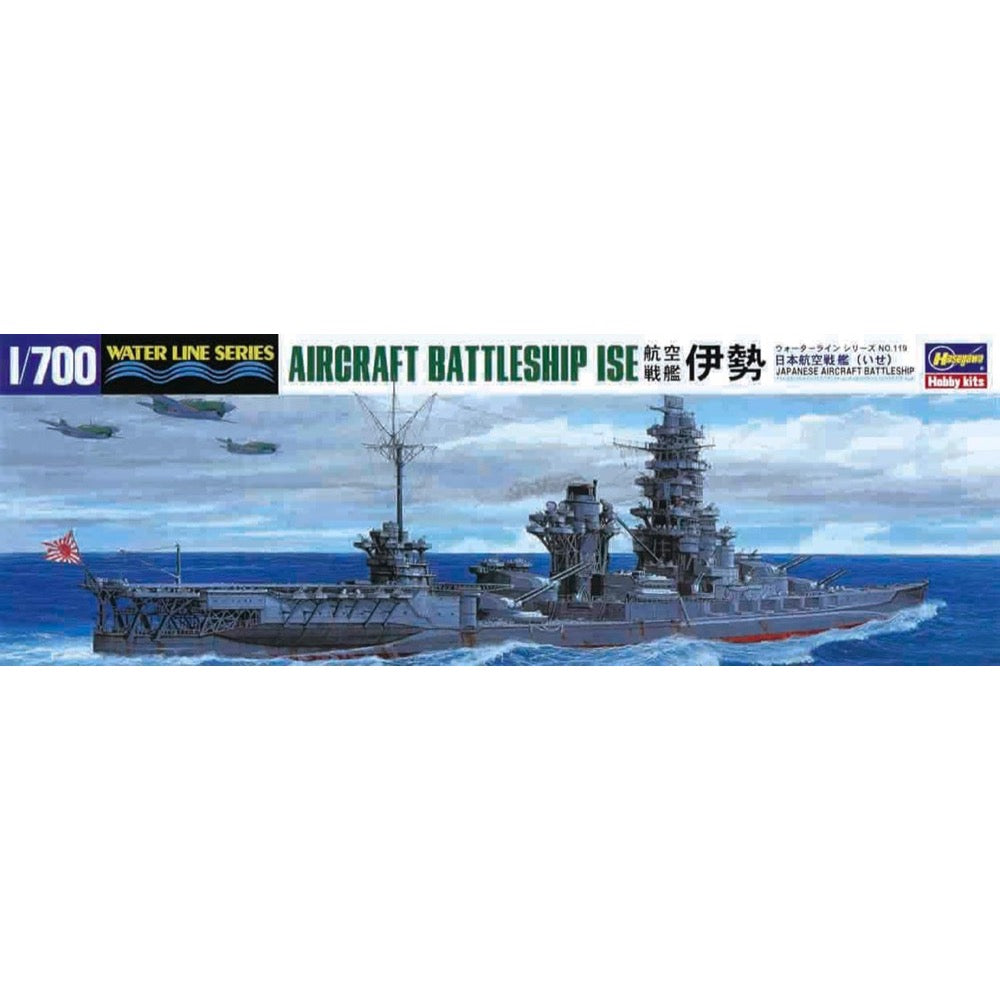
Hasegawa H49119 1/700 IJN Aircraft Battleship Ise
23.00
$
<p>Originally laid down in 1917, the Ise was completely modernized in 1937. Following the Japanese defeat at Midway, she was hastily reconfigured as a half-carrier in 1943 (flight deck to the rear of the vessel) and was in that configuration when she was sunk at her moorings in Kure by a US air attack on July 24, 1945. This new kit represents the ship as she appeared after the conversion to carrier configuration</p>
<h3>Specification</h3>
<ul>
<li>Scale:1/700</li>
<li>Item Size/Weight: 39 x 13 x 7.3 cm / 390g</li>
</ul>
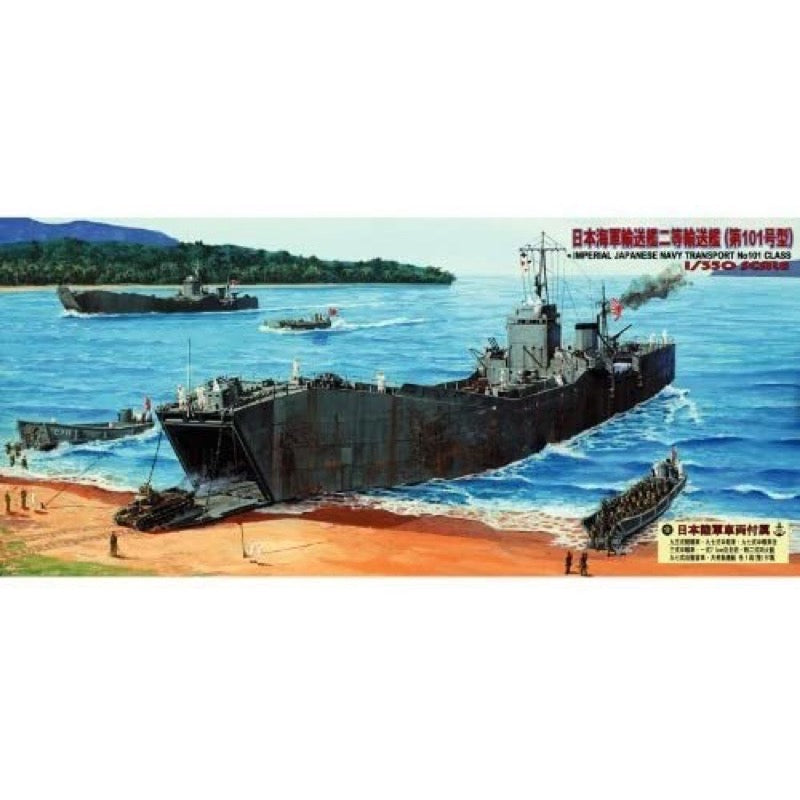
Pit-Road WB05NH 1/350 2nd Class Transporter No.101-Class with Flag and Ship Name Plate Photo-etched parts
40.00
$
<p>A second class transport ship is a type of transport ship (tank landing ship) built during the Pacific War, and was designed to allow forcible transport even under enemy air control.</p>
<p>The kit reproduces the 101st ship equipped with the diesel engine of the square chimney, which was built in the early six.</p>
<p>Also, the bow, which also functions as a vehicle lamp, which is the greatest feature of this model, has been reproduced with an open / close selection type.</p>
<p> </p>
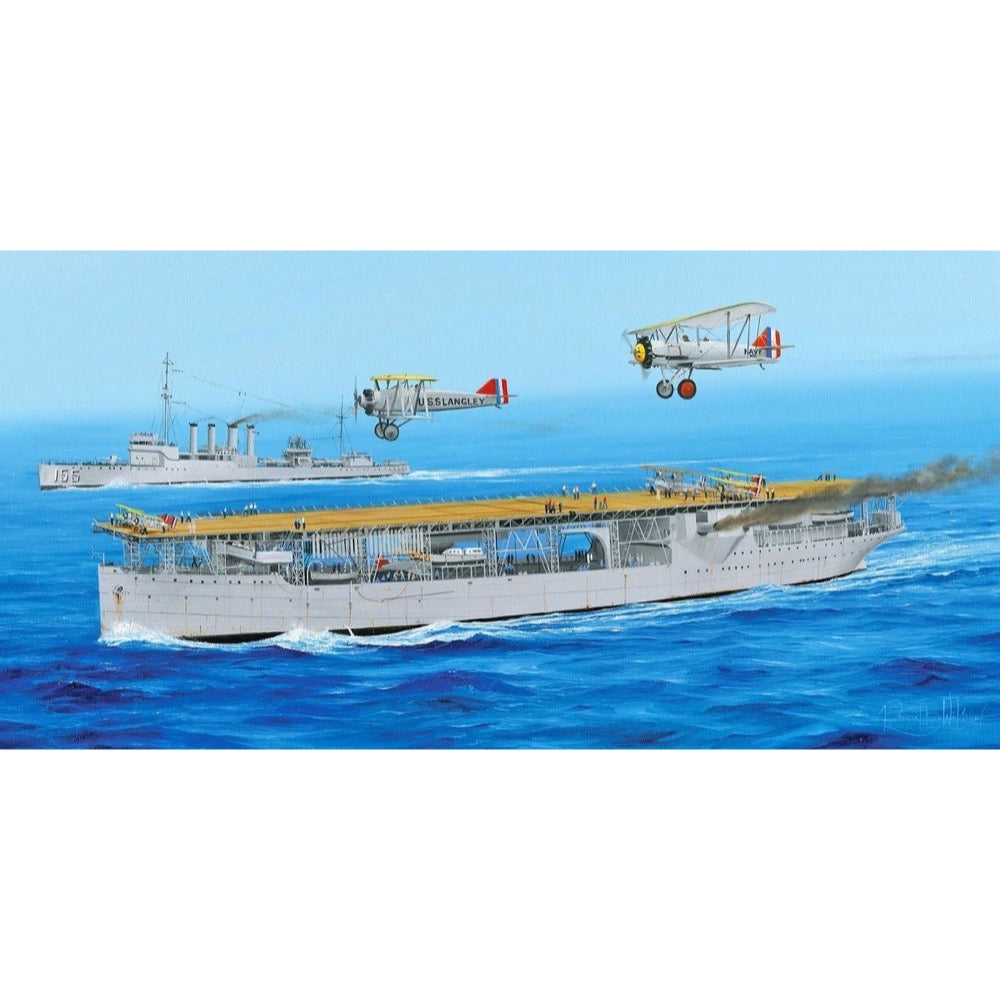
Trumpeter 05631 1/350 USS Langley CV-1
67.00
$
<p>USS Langley (CV-1/AV-3) was the United States Navy's first aircraft carrier, the US Navy's first turbo-electric-powered ship. Langley was named after Samuel Pierpont Langley, an American aviation pioneer. Following another conversion to a seaplane tender, Langley fought in World War II, on 27 February 1942, she was attacked by nine twin-engine Japanese bombers of the Japanese 21st and 23rd Naval Air Flotillas and so badly damaged that she had to be scuttled by her escorts.</p>
<p>Kit consist of 670+ parts, 18 sprues, single piece full hull, detailed (flight deck, hangar deck and other super superstructures), full weapons suite, anchor chain, ships crane, life rafts and ships boats, deck fittings, extensive photoetch (railings, inclined and vertical ladders, mast, antenna and additional fine accents), aircraft catapult and aircraft (BM-2 , F4B , T4M), name plate and display stand. Completed model is approximately 18.5" long. Decals and 3-view color painting guide representing flight deck markings, aircraft insignia, hull markings, jack and ensign.</p>
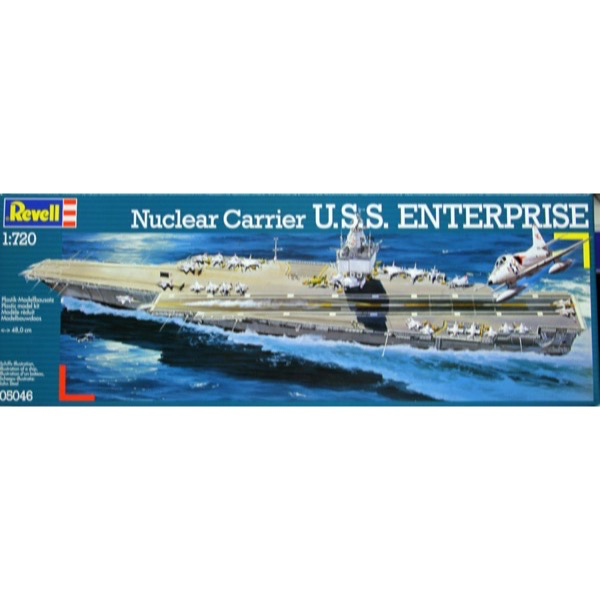
Revell 05046 1/720 USS Enterprise
23.00
$
<p>High quality, precision <a>plastic model kit</a>. <a>Paint</a> and <a>glue</a> not included. Requires assembly and painting. For intermediate to advanced skill modellers.</p>
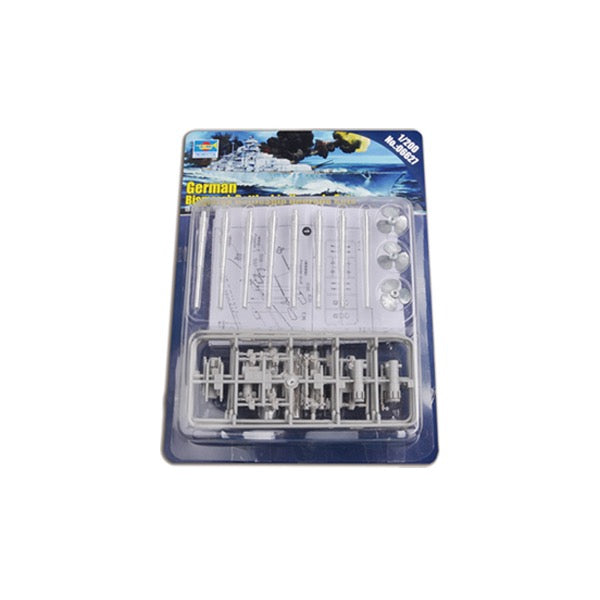
Trumpeter 06627 1/200 Bismarck German Battleship Upgrade Set
24.00
$
<ul>
<li>Product No. 06627</li>
<li>Product Name Germany "Bismarck" battleship upgrade</li>
<li>bar code 9580208066271</li>
<li>product ratio 1:200</li>
<li>product type Model Accessories</li>
<li>model size Length: mm Width: mm Height: mm</li>
<li>total number of parts 110+</li>
<li>metal parts gun barrel , propeller , anchor</li>
<li>etching parts n/a</li>
<li>film film n/a</li>
<li>resin parts n/a</li>
<li>total number of plates 4 sprues</li>
<li>announced date 2012-09</li>
<li>more description "Metal gun barrel</li>
<li>380mm / L52 * 8</li>
<li>150mm / L55 * 12</li>
<li>105mm / L65 * 16</li>
<li>37mm / L83 * 16</li>
<li>Metal Propeller * 3</li>
<li>Metal anchor * 4"</li>
</ul>
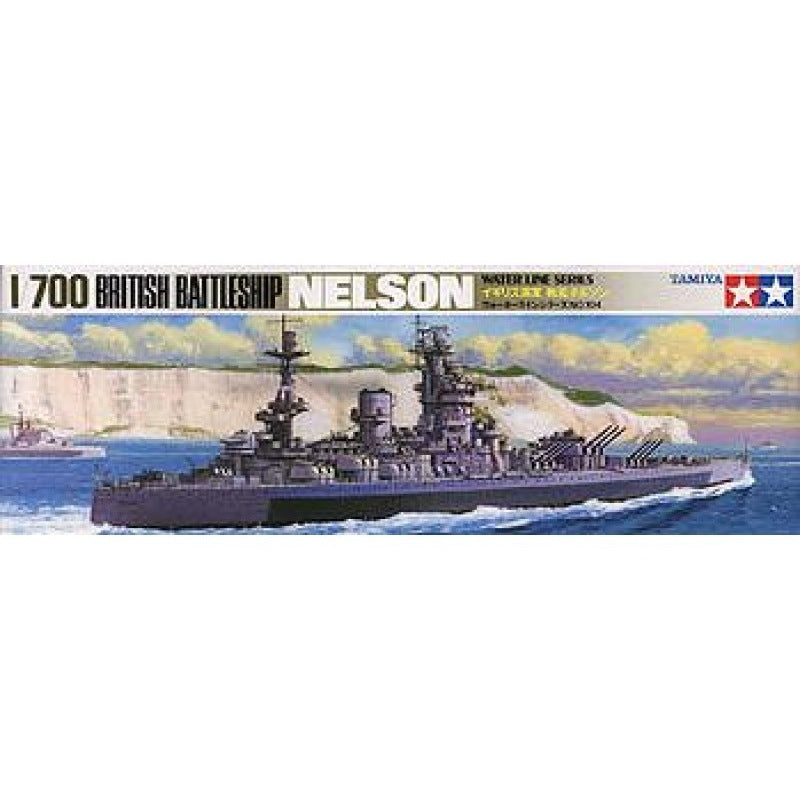
Tamiya 77504 1/700 HMS Nelson
8.00
$
<p>The Nelson was laid down in December 1922 at the Newcastle yard of Vickers-Armstrong. She was launched on September 3rd 1925 and completed in June 1927. Her armament consisted of nine 16-inch guns in triple turrets all sited forward of her bridge, twelve 6-inch guns in twin turrets, six 4-7 inch A.A. guns and eight 2 pounder pom-poms. Also two submerged torpedo tubes housed one on each beam forward below the lower deck line. It is insteresting to note these torpedos were of the 24.5 inch type common in the Japanese Navy, but unique to Nelson and Rodney within the Royal Navy as were their 16-inch guns. In order to save weight extensive use was made of new materials in her construction, such as light weight steel, aluminium, fir for her deck in place of the traditional teak, and plywood for many internal non structural bulkheads and fittings, all of which was fireproofed. Her completed displacement was 33,950 tons over a thousand tons under the limit imposed. The Nelson and Rodney were the first British warships to have a tower bridge and mast, also the first to have flush decks since the Lord Nelsons of 1908 and have their engine rooms forward of the boilers. As protection she carried a 14-inch armour belt along her beam which ran from slightly ahead of her fore turret aft to her steering compartment. Her main turrets carried armour 16-inches thick except for their backs which were 9-inch plate, the barbettes were of 15-inch plate and her middle deck A.P. was 6 1/4 inches thick over her magazines, varying to 3-inches over her machinery spaces. She was powered by Brown-Curtis geared turbines driving two shafts and her machinery was supplied by the Wallsend Slipway and Engineering Company. These gave her a speed of 23.5 knots and 46,000 H.P. at her standard displacement on trials, though this speed was seldom attained in service. She carried a complement in peacetime of 1,300 Officers and men, this being increase in wartime to 1,700. Because of her design, a compromise at best, she handled very badly under most conditions, and especially in cross winds or in shallow water. In a following sea or going astern she steered poorly, and was slow to answer the helm under all conditions.</p>

AFV SE70011 1/700 ADELAIDE-Class Guided Missile Frigate & SANTA MARIA-Class Friga
28.00
$
<p>ADELAIDE-Class Guided Missile Frigate & SANTA MARIA-Class Frigate</p>
<h3>Features</h3>
<ul>
<li>Can build Royal Australian Navy Adelaide-class frigate or Spanish Navy SANTA MARIA-Class Frigate.<br>
</li>
<li>New tooling HMAS Sydney MK 41 VLS & FABA Meroka 20mm CIWS.<br>
</li>
<li>Initial PFG-1112 / 1115 configuration.<br>
</li>
<li>Includes 1/700 SH-60B seahawk Helicopter!<br>
</li>
<li>1/700 RIM-66 & RGM-84 Harpoon Missiles & launcher included.<br>
</li>
<li>AN/SPS-55 AN/SPS-49 radar with sophisticated detail.<br>
</li>
<li>Mk75 76mm/62 navy gun & Mk15 CIWS include!<br>
</li>
<li>MK36 SRBOC & MK32 SVTT include!<br>
</li>
<li>Photoetched parts included.</li>
</ul>


